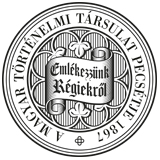Századok – 2000
TANULMÁNYOK - Takács Tibor: A főispáni kar társadalmi összetételének alakulása a két világháború közötti Magyarországon 1029
1100 TAKÁCS TIBOR de l'effectif des comtes suprêmes fut constituée - sauf quelques exceptions - de la classe moyenne traditionnelle, surtout de deux segments voisins, du groupe des officiers de l'administration publique ("classe des officiers") et des propriétaires de biens. La réponse peut être formulée d'une autre manière, à savoir que l'élit de l'administration locale traditionnelle et celui des propriétaires de biens se présentait dans l'effectif des comtes suprêmes. Avant les comtes suprêmes occupèrent rarement des positions élites, au niveau national ils n'avaient contacts personnels qu'avec l'élite politique nationale (législation) et avec l'élite d'ordre traditionnel, avec un segment étroit de l'aristocratie, un tiers des personnes étudiées. Pour la majorité, y compris ceux qui possédaient d'un pouvoir local important, le siège du comte suprême fut "la" position, seulement peu nombreux d'entre eux étaient capables d'échanger le titre de comte suprême à une position d'élite nationale. Le caractère des positions multipliées ne se manifesta qu'au niveau local, au niveau national un détachement relatif des autres groupes d'élites peut être formulé. Cela était en corrélation avec le caractère de la position du comte suprême qui favorisait surtout la nomination des personnes et des officiers locaux et puissants, et avec le fait que les devoirs et l'incomptabilité des comtes suprêmes rendirent ab ovo impossible la réalisation d'une carrière à un autre domaine, durant la fonction. Le titre des comtes suprêmes jouait le rôle le plus important des comtes suprêmes dans l'évolution de l'élite par le fait qu'il élevait en personne les membres de l'élite puissants de la localité - durant, sans aucune doute la fonction - à l'élite nationale. CHANGES IN THE SOCIAL STRUCTURE OF THE BODY OF HIGH SHERIFFS IN THE INTERWAR PERIOD IN HUNGARY by Tibor Takács (Summary) Although the high sheriffs were government officers, their position attached them to the municipal authorities and thus they constituted a kind of link between the central and local levels of administration and politics. As the confidential agents of the government they controlled the municipalities and thanks to their extensive powers they were able to reserve the final decision for the minister in virtually all municipal affairs. The practical use of their right of supervision was made easier by the fact that they presided the corporate organs of the municipality with the only exception of the central elected committee. Besides their administrative duties the high sheriffs also engaged in political activities: by directing the local organisation of the governing party and by controlling the election of representatives they secured majority for the government in the parliament. They also played an important role in the functioning of the regime itself by providing the vital link between the government and the municipalities or, in a more general sense, betweem the central power and the local elites. Among the inter-war governments only that of István Bethlen, which was in office for more than ten years, had enough power and time to transform the body of high sheriffs to its own liking. His successors lacked both political support and time for a complete change and were thus forced to cooperate with a body basically formed by their predecessors. It is evident that the former stability of the group was broken during the government of Gyula Gömbös, for more than half of the changes effected in the period under consideration took place after 1932. Especially marked was the mobility between 1935 and 1939. Yet the group of high sheriffs never went through a really drastic transformation and the changes depended on the shifting relations of power between the leading political groups. At the same time the lack of changes meant that those high sheriffs who remained in office, even if not entirely committed to the person and policies of the prime minister, were generally loyal to the regime itself. The high sheriffs were as a rule selected on the basis of informal relationships. What counted was political services, party activity and wide-ranging social and family networks, and in in most cases these factors seem to have operated simultaneously. In the inter-war period most of the high sheriffs were recruited among the noble jurists of the local and central government and among land-owners and politicians with administrative experience. The social background of the group was not modified significantly during the period under consideration, though the importance of legal experience somewhat diminished on the long run. Lawyers and former army officers also had some chance to be appointed, the former in the 1920s, the latter rather in the 1930s. In the early 1930s the proportion of middle and great landowners and of active "farmers" increased, whereas the number of former parliamentary representatives
